(Almost complete. Full release coming this week!)
Ultimate Vocal Remover GUI v5.2.0
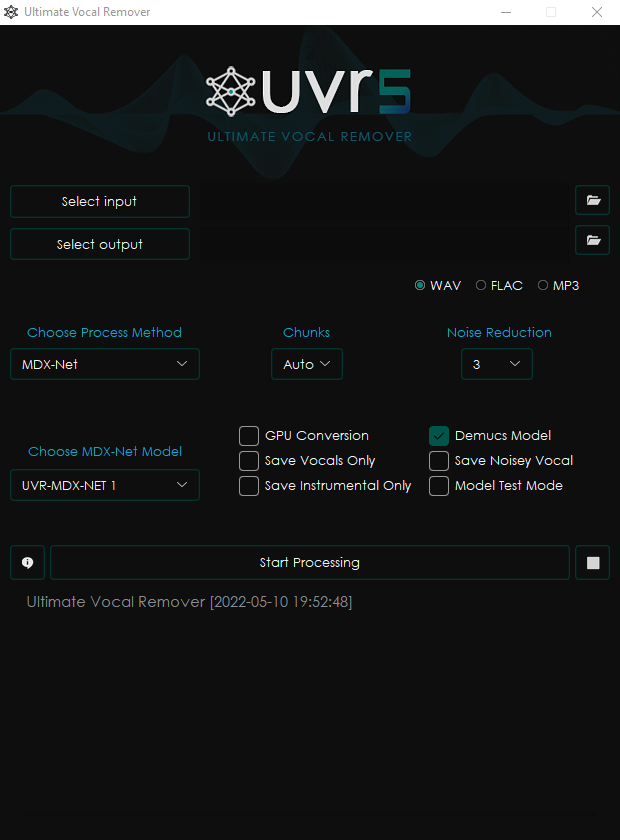
About
This application uses state-of-the-art AI and models to remove vocals from tracks. UVR's core developers trained all of the models provided in this package.
Installation
UVR v5.2.0 and all of its features are only available on Windows.
Windows Installation
This installation bundle contains the UVR interface, Python, PyTorch, and other dependencies needed to run the application effectively. No prerequisites required.
-
Download the UVR installer here
-
This installer is intended for those running Windows 10 or higher.
-
Application functionality for systems running Windows 7 or lower is not guaranteed.
-
Application functionality for Intel Pentium & Celeron CPUs systems is not guaranteed.
-
Optional
- The Model Expansion Pack can be downloaded here
- Please navigate to the "Updates" tab within the Help Guide provided in the GUI for instructions on installing the Model Expansion pack.
- This version of the GUI is fully backward compatible with the v4 models.
- The Model Expansion Pack can be downloaded here
Other Platforms
This application can be run on Mac & Linux by performing a manual install (see the Manual Developer Installation section below for more information). Some features may not be available on non-Windows platforms.
Application Manual
General Options
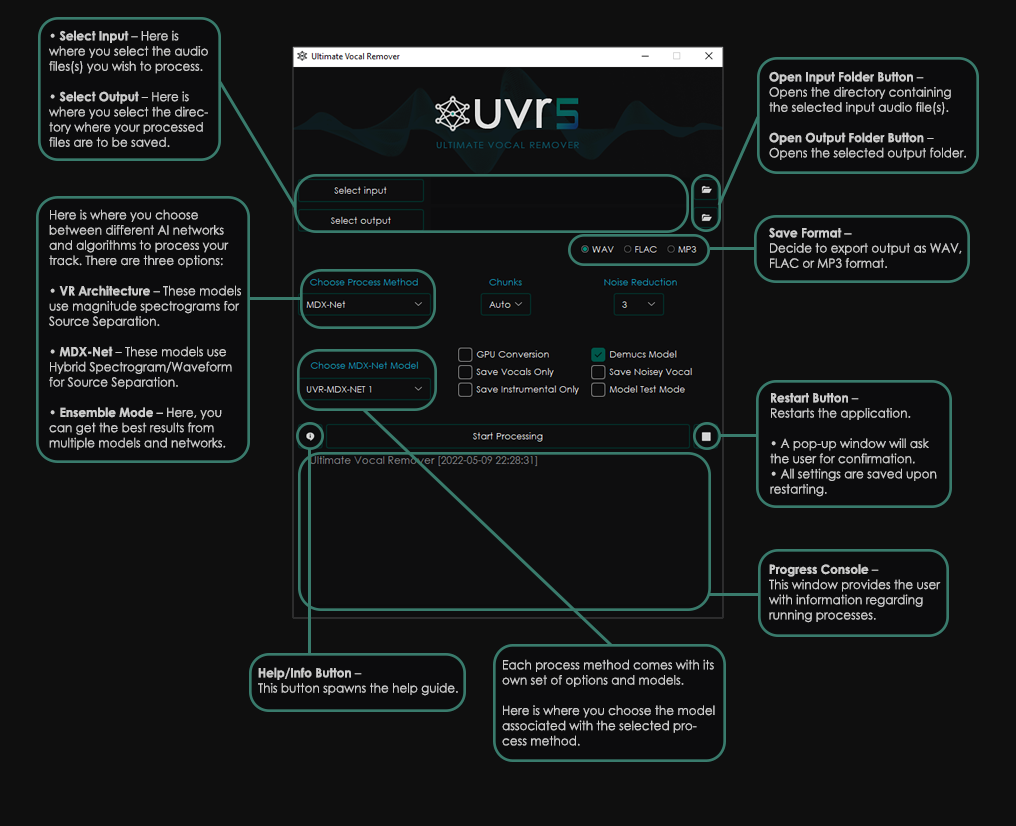
VR Architecture Options
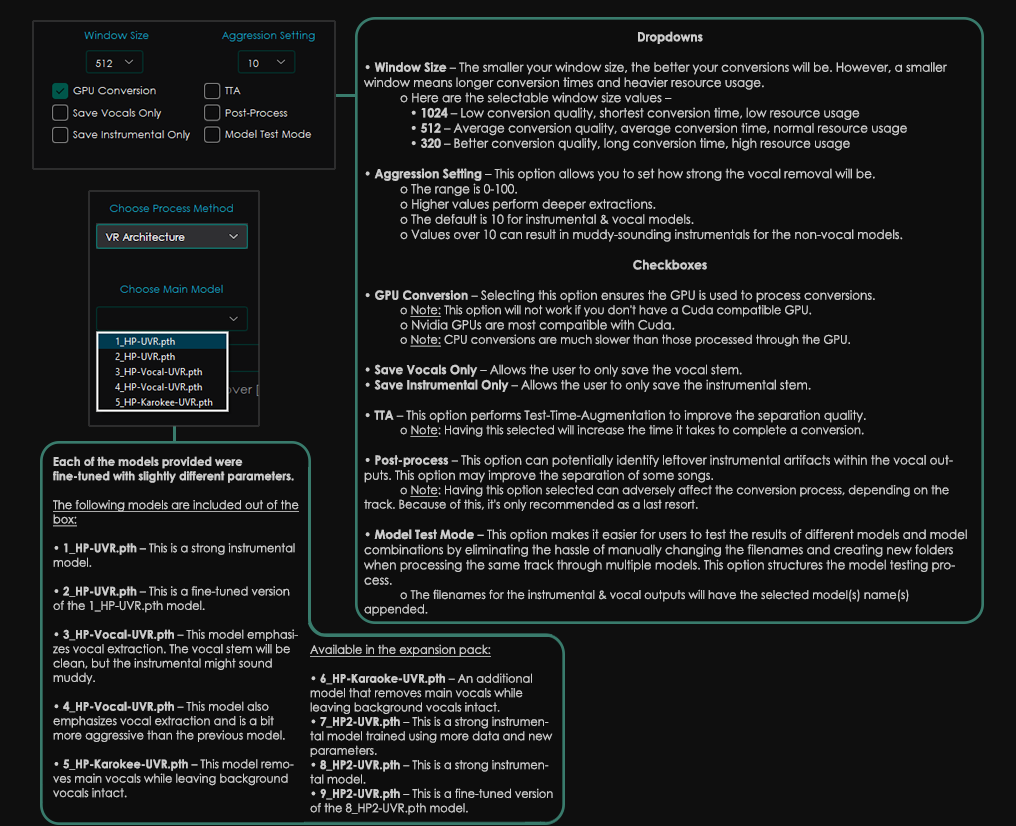
MDX-Net Options
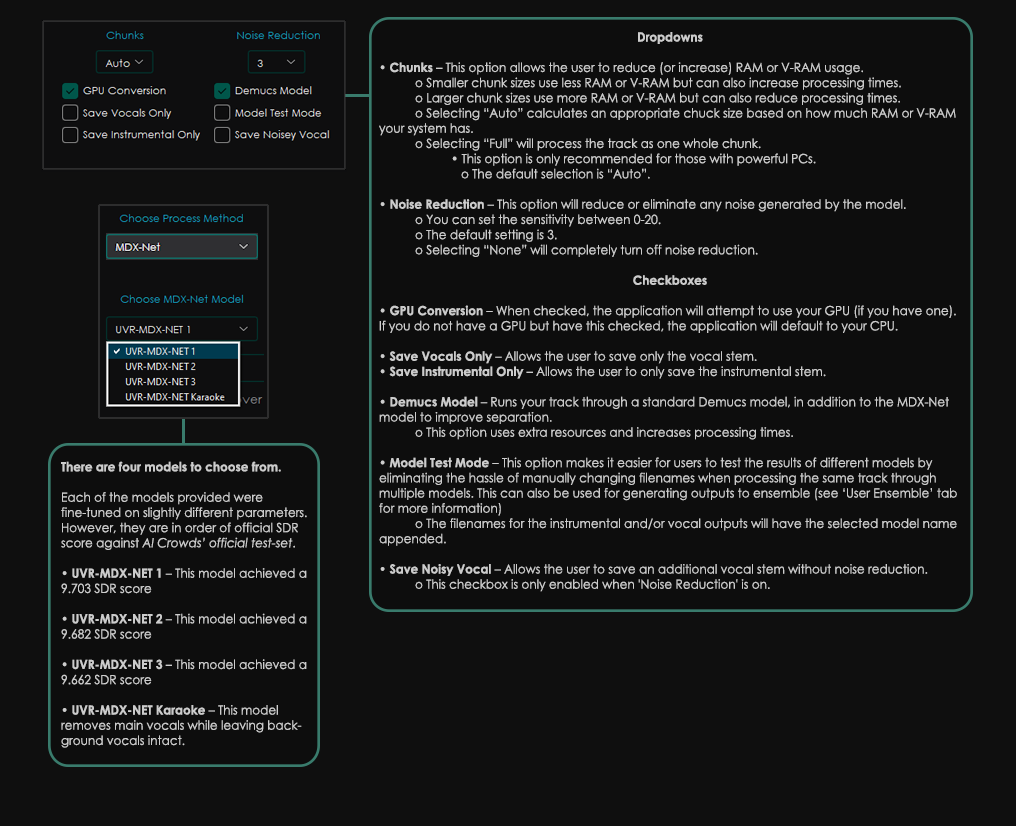
Ensemble Options
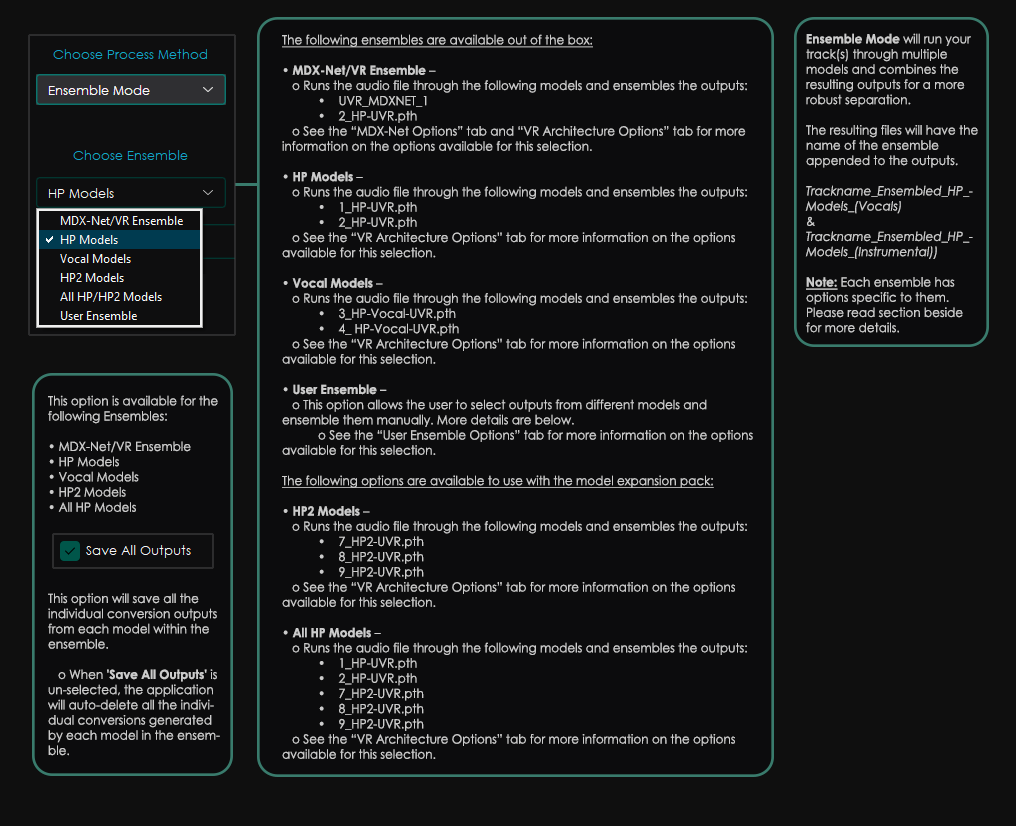
User Ensemble

Other GUI Notes
- The application will automatically remember your settings when closed.
- Conversion times will significantly depend on your hardware.
- This application relies on Sox - Sound Exchange for Noise Reduction.
- This application relies on FFmpeg to process non-wav audio files.
- This application will not be friendly to older or budget hardware. Please proceed with caution! Please pay attention to your PC and make sure it doesn't overheat. We are not responsible for any hardware damage.
Change Log
- v4 vs. v5
- The v5 models significantly outperform the v4 models.
- The extraction's aggressiveness can be adjusted using the "Aggression Setting." The default value of 10 is optimal for most tracks.
- All v2 and v4 models have been removed.
- Ensemble Mode added - This allows the user to get the most robust result from each model.
- Stacked models have been entirely removed. The new aggression setting and model ensembling have replaced the stacked model feature.
- The NFFT, HOP_SIZE, and SR values are now set internally.
- The MDX-NET AI engine and models have been added.
- This is a brand new feature added to the UVR GUI.
- 4 MDX-Net models trained by UVR developers are included in this package.
- The MDX-Net models provided were trained by the UVR core developers
- This network is less resource-intensive but incredibly powerful.
- MDX-Net is a Hybrid Waveform/Spectrogram network.
Troubleshooting
Common Issues
- This application is only compatible with 64-bit platforms.
- If FFmpeg is not installed, the application will throw an error if the user attempts to convert a non-WAV file.
Issue Reporting
Please be as detailed as possible when posting a new issue. Navigate to the "Error Log" tab in the Help Guide for detailed error information that can be provided to us.
Manual Installation (For Developers)
These instructions are for those installing UVR v5.2.0 manually only.
- Download & install Python 3.9 or lower (but no lower than 3.6) here
- Note: Ensure the "Add Python to PATH" box is checked
- Download the Source code zip here
- Download the models.zip here
- Extract the ultimatevocalremovergui-master folder within ultimatevocalremovergui-master.zip where ever you wish.
- Extract the models folder within models.zip to the ultimatevocalremovergui-master directory.
- Open the command prompt from the ultimatevocalremovergui-master directory and run the following commands, separately -
pip install --no-cache-dir -r requirements.txt
pip install torch==1.9.0+cu111 torchvision==0.10.0+cu111 torchaudio==0.9.0 -f https://download.pytorch.org/whl/torch_stable.html
-
FFmpeg
- FFmpeg must be installed and configured for the application to process any track that isn't a .wav file. Instructions for installing FFmpeg is provided in the "More Info" tab within the Help Guide.
-
Running the GUI & Models
- Open the file labeled 'UVR.py'.
- It's recommended that you create a shortcut for the file labeled 'UVR.py' to your desktop for easy access.
- Note: If you are unable to open the 'UVR.py' file, please go to the troubleshooting section below.
- Note: All output audio files will be in the '.wav' format.
License
The Ultimate Vocal Remover GUI code is MIT-licensed.
- Please Note: For all third-party application developers who wish to use our models, please honor the MIT license by providing credit to UVR and its developers.
Credits
- DilanBoskan - Your contributions at the start of this project were essential to the success of UVR. Thank you!
- Bas Curtiz - Designed the official UVR logo, icon, banner, splash screen, and interface.
- tsurumeso - Developed the original VR Architecture code.
- Kuielab & Woosung Choi - Developed the original MDX-Net AI code.
- Adefossez & Demucs - Developed the original MDX-Net AI code.
- Hv - Helped implement chunks into the MDX-Net AI code. Thank you!
Contributing
- For anyone interested in the ongoing development of Ultimate Vocal Remover GUI, please send us a pull request, and we will review it. This project is 100% open-source and free for anyone to use and modify as they wish.
- We only maintain the development and support for the Ultimate Vocal Remover GUI and the models provided.
References
- [1] Takahashi et al., "Multi-scale Multi-band DenseNets for Audio Source Separation", https://arxiv.org/pdf/1706.09588.pdf

